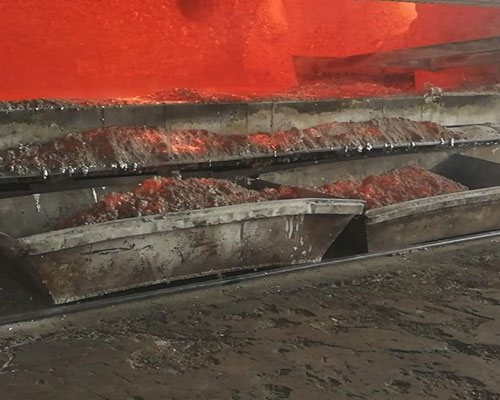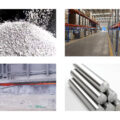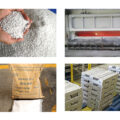The main defects of cast aluminum alloy: pores and slag inclusion, which are caused by solid particles such as gas and oxides remaining in the alloy. Therefore, in order to obtain high-quality melt, it is not only necessary to select the correct and reasonable smelting process, but also the flux refining and purification treatment of the melt is also very important. Flux Refining and Purification Treatment is the key to improving the quality of aluminum alloy metallurgy, and it is also the basis for refinement and deterioration.

With the increase of the purification treatment temperature, the hydrogen content of the molten aluminum after the flux refining and purification treatment changes relatively smoothly and remains at a relatively low level. Moreover, the hydrogen content in the molten aluminum remains relatively stable with the extension of the heat preservation and standing time, which is mainly determined by the impurity content in the molten aluminum.
The flux purification process is also a process of hydrogen absorption and oxidation. The final flux purification effect depends on these two dynamic equilibrium processes. The oxidized inclusions in the aluminum melt have many tiny holes, voids and cracks, and hydrogen is easily adsorbed on these inclusions during the diffusion process in the melt. The higher the temperature, the greater the diffusion coefficient of hydrogen in the aluminum melt, and the greater the probability of hydrogen being adsorbed by non-metallic inclusions. In this way, the oxygen content of the melt around the inclusions will inevitably decrease. In order to achieve a concentration balance, the hydrogen on the surface of the melt will diffuse into the melt, so that the aluminum melt will further absorb hydrogen into the air.
The molten aluminum after flux purification has a lower impurity content. During the process of increasing the melting temperature, the probability of hydrogen being adsorbed to the inclusions is reduced, so that the chance of further hydrogen increase in the aluminum liquid is reduced, so the hydrogen content in the aluminum liquid can be kept low as the temperature rises. After the aluminum liquid is purified, with the extension of the holding time, the hydrogen absorption process increases, and the inclusions provide the base for bubble nucleation. The molten aluminum treated with the flux-removing flux has less inclusions and the hydrogen absorption process is not easy to proceed with. The hydrogen content of the molten aluminum can be kept low with the extension of the heat preservation and standing time.





















